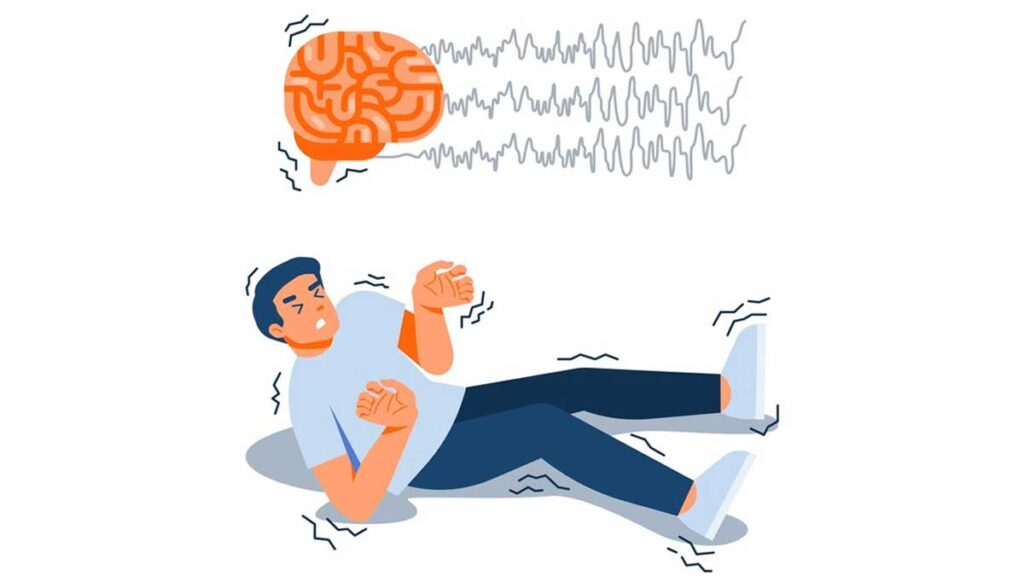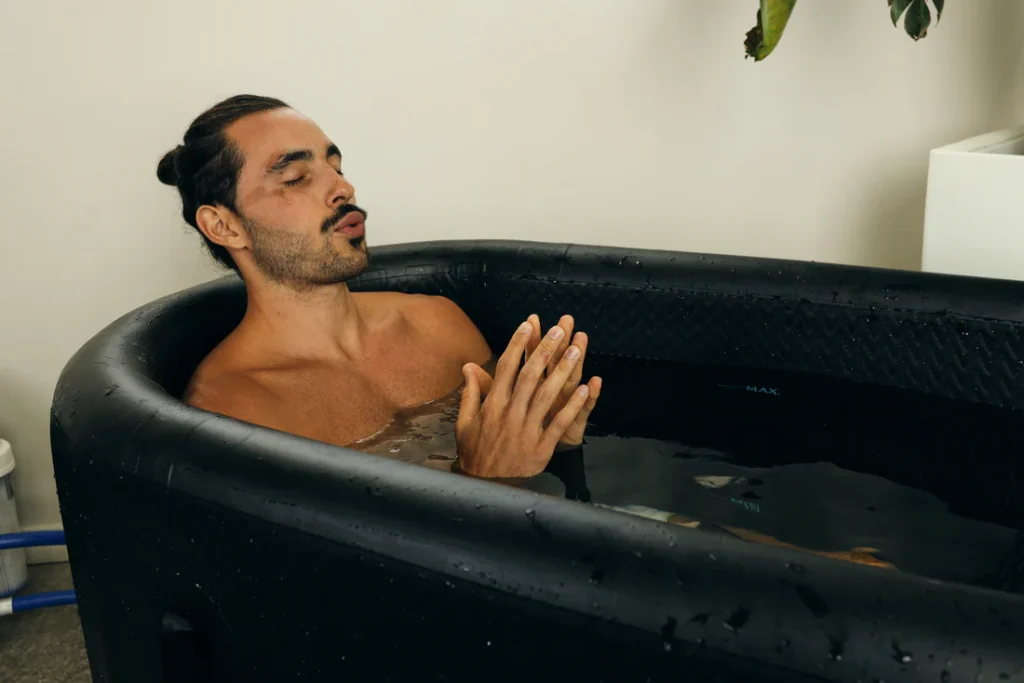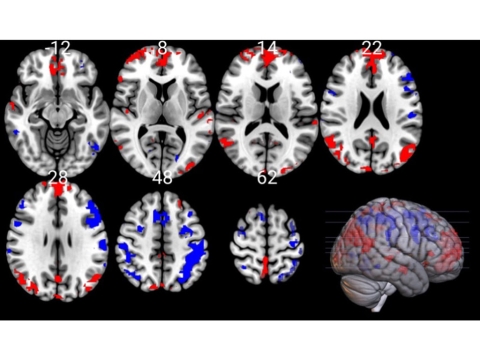Is Cold Plunge Good For Epilepsy ?

Is Cold Plunge Good for Epilepsy? Benefits, Risks and Expert Opinions
You might have seen so many videos on the internet where celebrities are taking a cold water dip or athletes and medicos are promoting the benefits of cold water therapy. This trend has been on the rise for many years and even became more popular after its debut in the CrossFit Games 2022. Given its popularity, many people have started trying cold plunging methods, from swimming in cold water to filling their bathtubs with ice cubes.
On the other hand, there is epilepsy. It is a chronic neurological disorder that affects millions of people globally. It has different symptoms that also include having seizures, which impact the daily life of people with epilepsy to a huge extent. Even though there are many medical treatments available to manage epilepsy, the search is still going on in terms of alternative treatments.
This brings us to the question: Is cold plunge good for epilepsy? Our article will explore this and provide answers regarding the practice of cold plunging, its benefits and whether it constitutes a feasible therapeutic option for those living with epilepsy.
So, let’s begin!
Understanding Epilepsy

So before we move on to the topic of whether the act of cold plunging benefits people with epilepsy, let us first have an idea of what epilepsy is.
What is Epilepsy?
Epilepsy is a chronic neurological disorder that affects 50 million people globally. In the case of epilepsy, there is a very abnormal burst of activity from the brain cells called neurons. This abnormal activity causes the neurons to fire their signal at a higher speed than usual (500 times a second). This whole scenario results in a seizure in the body.
Epilepsy is usually considered to occur in children and older adults, but it can occur at any age and is a result of genetics and brain injuries.
Depending on the region of the brain affected, a seizure manifests itself with a variety of symptoms such as
- Uncontrollable movement
- Loss of awareness
- Periods of unusual behaviors and sensations
- Loss of consciousness

When we talk about the regions of the brain, there are many types of seizures but with two main categories.
Focal or Partial Seizures
These types of seizures usually occur in a limited area of the brain and are usually the most common ones, too. They are divided further into two parts, simple partial seizures and complex partial seizures, each having its own set of symptoms and levels of consciousness.
Generalized and Complete Seizures
The other type is a generalized and complete seizure in which the whole brain is involved instead of one part. It has many different types, affecting the body in different ways.
For example, a tonic seizure causes the body’s muscles to stiffen up, while an atonic seizure causes the body to relax, making a person fall down suddenly. Similarly, in an absent seizure, the body zones out, and the person only stares at a thing for a couple of moments. And in myoclonic seizures, the body suddenly starts jerking. Finally, in the tonic-clonic seizures, the body starts to stiffen, leading to jerking and shaking that lasts a few minutes.
Knowing the kind of seizure is actually a key to treatment, which is basically the use of different medications. Many people respond well to these anti-epileptic drugs, but there are some alternative treatments, such as brain stimulation or even surgery, if necessary, sometimes carried out. Lifestyle modifications, such as a ketogenic diet, proper sleeping routine, and stress avoidance, are important for people who have epilepsy.
Common Challenges for Epilepsy Sufferers
Living with epilepsy can be very tricky. If we talk about the mental health of such patients, many get anxious and depressed due to the fear and unpredictability of these seizures. This constant worrying negatively impacts their overall well-being.
Physically, getting a seizure can be an exhausting procedure, and patients get injuries such as fractures and bruises.
Epilepsy also affects their social life in many cases. For example, the inability to drive limits their independence and makes it hard for them to engage in everyday activities. Social situations may be anxiety-provoking since many people worry about having a seizure in public areas. This isolation can further limit the possibilities, such as reducing their educational opportunities and restricting access to health and life insurance.
While all these factors affect the quality of life, they still manage to find ways to live with the condition in a more healthy and fulfilling way.
What is Cold Plunge Therapy?

Cold plunging, in simple words, means to immerse your body completely in cold water. Typically, the water temperature is around 10°C or 50°F. It is a type of cryotherapy that aims to achieve therapeutic benefits for the body, mind, and sometimes both.
The Concept of Cold Plunge
The concept of cold plunging is not new to us. It has been used for years in Roman, Egyptian, and Greek empires in different forms. There is even evidence of the use of cold plunging dating back to 3,500 B.C.E. in the Edwin Smith Papyrus, the oldest manuscript for medical texts. The original intent was to treat conditions like muscular fatigue and skin issues.
Not only this, but Hippocrates also suggested the use of cold water and ice to reduce bleeding and fever.
Many years later, especially in the late 17th and 18th centuries, many scientists began to understand the therapeutic benefits of cold exposure. After that, there was an increase in the use of cold water as hydrotherapy. In the 20th century, cold baths were widely accepted in medical treatments for fever, inflammation, and mental health issues.
Potential Health Benefits of Cold Plunge
In a cold plunge, you experience a fascinating process. Your body temperature drops, the heat from the body moves out, and there is a change in blood circulation. This in return, leads to many benefits for the body, including the following:
- Post-workout and muscle recovery
- Reduced inflammation
- Provide pain relief
- Relaxes sore muscles
- Reduce the symptoms of depression and anxiety.
- Provides mental clarity and resilience
- Boosts immune system
- Stimulates the metabolism
How Cold Plunge Might Affect Epilepsy

When we talk about the use of cold plunging for epilepsy, there are mixed results. Some evidence suggests its use, while others warn us.
The following paragraphs will guide you through the benefits and risks of cold plunging in epilepsy. This will help you have a clear understanding of this practice.
Potential Benefits of Cold Plunge for Epilepsy
Cold plunging can have several advantages when it comes to mental health. One of the greatest here is its ability to reduce stress and anxiety. High levels of stress can induce seizures, so it is important to manage it. Cold exposure to the body can provide a sense of calm and relaxation, lowering the frequency of seizures. Also, it causes the release of endorphins, the body’s natural mood enhancers. This endorphin release can reduce stress and anxiety too.
Another very useful benefit is improving sleep quality. Having good sleep is essential for seizure control, and when you perform cold plunging, it enhances the sleep pattern by lowering the body temperature, making it very easy to fall asleep.
Along with this, cold water can stimulate the vagus nerve, which helps to improve a person’s mood and overall well-being. Some studies also suggest its use for providing mental clarity.
Potential Risks for Epilepsy Patients
Before you think of trying cold plunging for epilepsy after seeing the benefits, it is important to also be aware of the potential risks. As an example, a cold exposure can cause a sudden shock to a person that may trigger seizures in them.
A few recent studies have also highlighted this. For example, a German study proved that low atmospheric pressure and colder temperatures can increase the risk of a seizure. On the other hand, higher temperatures lowered the risk. Likewise, in another 2019 study, it was proven that with every 1 °C drop in temperature, there was an increased risk of about 1.6% of having a seizure.
For those who already suffer from seizures, cold plunging can be a danger. This is because the disorientation of the body while the seizure is happening can cause further injuries, especially in unsafe environments.
Along with all of these risks, there is a special type of epilepsy that is especially triggered due to cold temperatures. It is known as cold-induced reflex epilepsy (CIRE). For those who suffer from it, short encounters like taking a shower in cold water can induce these seizures.
Expert Opinions on Cold Plunge for Epilepsy

Since we have learned about the benefits of cold plunging, it is equally important to understand the viewpoint of experts in the field. Here we are sharing what the experts have to say about the effectiveness and safety of cold plunging for epilepsy.
What Do Neurologists Say about Cold Plunge and Epilepsy?
Many neurologists don’t recommend the use of cold water therapy for people with epilepsy. And there are good reasons for this caution.
To begin, cold exposure can usually trigger a shock response in the body. This shock can cause seizures in an epileptic patient. Along with it, the physiological changes the shock brings, such as increased heart rate and blood pressure, can also be seizure-provoking for some. Another factor that neurologists debate is the sensory overload that comes with a cold plunge. In the case of someone already suffering from epilepsy, this can be very overwhelming.
Also, there is not much research present on the use of cold plunges for epilepsy. That is why neurologists recommend exercising caution without solid evidence of its use.
Along with neurologists’ opinions, A French gastroenterologist, Nicolas Iconomidis, MD, has written a book about cold water swimming. In his book he does not suggest the use of cold plunging for many health conditions, including epileptics. He says a seizure while swimming cold water may not be a good idea.
Patient Experiences and Testimonials
After looking into expert opinions, let’s look at the real-life examples of people with epilepsy regarding cold water therapy. One reader (Reddit) shared their experience on a form that his seizure and related pain get worse every winter. He also mentions that even grocery shopping becomes difficult for him, especially in the refrigerated area, as it cold always triggers his epileptic seizures.
Another shared an opposite experience. He says that he credits cold water therapy for reducing his stress. Just make sure there is someone around you when you do it.
This shows that the activity of cold plunge for epilepsy is not a one-size-fits-all solution. There are people who have benefited by exposing themselves to cold. While there are a few who have had the opposite experience.
Alternatives to Cold Plunge for Epilepsy
Other Natural Therapies for Epilepsy

If a cold plunge isn’t the best solution, then what is the appropriate treatment for people with epilepsy?
Thankfully, there are many alternative therapies to use for the treatment and management of epilepsy. Here are some effective ones to consider:
1. Ketogenic Diet
The ketogenic diet is a high-fat and low-carb diet. It is recommended for people suffering from certain medical conditions such as diabetes and epilepsy. Research also supports its effectiveness in treating epilepsy. This research suggests that a ketogenic diet can be a beneficial tool in reducing the frequency of seizures and helps them think more clearly.
2. Acupuncture
Acupuncture is a holistic practice used for centuries. In this technique, fine needles are inserted into different body parts for therapeutic purposes. For epilepsy, there is a hypothesis that it regulates the parasympathetic tone of the areas in the brain affected by epilepsy. Even a recent 2023 research study has claimed it to be as effective when used along with medications.
3. Cannabidiol (CBD)
Cannabidiol is an active compound that is found in the Cannabis Sativa plant. It has recently gained popularity as a medicinal treatment as it is non-psychoactive in nature in comparison to its counterparts (tetrahydrocannabinol, THC).
CBD oil has especially been proven useful in the medical treatment of seizures. Even the FDA has proven CBD oil for medicinal usage as Epidiolex. Most of the CBD-based products available in the market are not regulated by the FDA and they also have serious side effects. That is why it is always better to be cautious and consult your healthcare professional.
4. Yoga
Yoga has been used as a relaxation technique for centuries. It has also found its use as an adjunctive therapy in seizure control. One of the key mechanisms behind its calming effects is that it stimulates the vagus nerve. One research study even mentions that yoga therapy can reduce the frequency of seizures by 28-38%.
And even in the recent 2023 study, doing yoga may also reduce the stigma as well as the frequency of seizures related to it. Additionally, yoga helps induce mindfulness.
5. Biofeedback
Many experts recommend using biofeedback for treatment of epilepsy. In biofeedback, your heart rate and brain activity are noted in real-time with the help of electrodes placed on your body. As this provides you with immediate feedback, biofeedback helps you to learn relaxation techniques.
Research has shown that biofeedback has been especially effective for people who usually struggle to manage their symptoms with conventional medicine. One study even mentions an impressive decrease in seizures (almost 43%) by using this machine.
However, the use of this technique requires expert provision, so don’t try it alone and always look for professional guidance.
6. Vagus Nerve Stimulation
If nothing works for managing seizures, vagus nerve stimulation is used. It is an invasive procedure in which a device is implanted in the chest. This device sends mild, regular, and measured signals to the vagus nerve and calms those nerves that cause seizures. It is a very promising procedure with a 50–60% reduction in seizure occurrences.
When to Consult a Doctor

While there is no permanent cure for epilepsy, the main goal here is to find treatments that make everyday life better for people suffering from epilepsy. So, you can consider any of the above therapies mentioned for managing epilepsy. That being said, it is important to consult a professional before trying any of these therapies.
Is Cold Plunge Good For Epilepsy ?
To summarize, many neurologists don’t recommend the use of cold water therapy for people with epilepsy and there are not manyh researches done on the use of cold plunges for epilepsy.
Conclusion
To sum it up, cold plunges do have their benefits for mental health. But we recommend you to proceed with special care, as what works for many might not work for you. Many people have seen beneficial results after cold water exposure. But some have also shared their personal stories where cold exposure was not helpful and triggered their condition.
That is why we should always pay close attention to both physical signs and reactions of the body towards such therapies. It would of course, be important to consult a healthcare professional about your special concerns for healthcare needs and what modifications may be needed for your case.
And if you have any experiences with cold plunging or have any thoughts related to the topic, please share them in the comments down below. Your insights may be valuable for our community to understand and make decisions accordingly.



